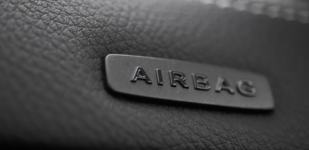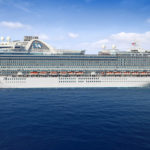Airbags That Kill: Can Manufacturers Be Found Guilty of a Criminal Offence?

This article refers to a recent Australian announcement of yet another fatal airbag concern, and although the investigation is in its early stages, we shall explore the company involved and revisit the previous situation with the Japanese company Takata corporation, which then saw over three million Australian vehicles recalled so the dangerous component in airbags could be replaced.
We will look in detail at the technicalities involved with the defective parts of an airbag in relation to the current issues being investigated by Australia, and explore the reasons why this became such a dangerous issue over more than two decades.
This was despite opposition to the preferred chemical of the potentially offending companies expressed by experts.
Perhaps, it is suggested, profit was put ahead of safety; which raises the question of whether corporations may have committed the offence of criminal negligence or even manslaughter for allowing dangerous airbags to be installed into vehicles.
But first, let’s look at a brief history of the airbag.
What is an airbag?
Airbags are a form of safety restraint systems for motor vehicles, essentially designed to prevent death and serious injury in the event of a collision.
They contain cushions which are inflated by gas and are built into the steering wheel, dashboard, roof and/or seats etc.
Indeed they can be built anywhere that an occupant of a vehicle may be harmed, including the seatbelt itself. The system is activated on collision by a crash sensor which triggers a rapid expansion of nitrogen gas which inflates the cushion and protects the occupants from hard surfaces.
There is also a system whereby in certain circumstances a pedestrian may be protected.
There is no doubt that airbags save lives. Just the comparison between the average time it takes for a collision to occur and the response time of airbag deployment to its fullest is what determines how safe occupants of a vehicle will be. Such times are calculated in milliseconds.
That is the reason why it is essential that compromised components within the structure of airbags are investigated to its fullest by both experts and governments in tandem, in order to ensure our loved ones survive in the event of a collision.
Evolution of airbags
Two men in particular can claim to be the inventors of the vehicle airbag dating back to the earlier 1950s. One was an industrial engineer with the US navy, John W. Hetric and the other was a German engineer, Walter Linderer. Prototypes were developed and consisted of an inflatable bag connected to a tank of compressed air.
In the American’s version it consisted of a spring set-up activating valves within the tank thereby releasing air to inflate the airbag.
Whilst in the German’s case activation occurred by bumper impact or driver assisted. The flaws were that the systems had trouble sensing the impact meaning the airbag may not inflate and, in any case, compressed air did not inflate the airbag sufficiently even when activated. Sadly the invention was insufficient for consideration of production. The seed was sown though.
During the ensuing years automakers and inventors alike worked on the process knowing that for a system to be successful accurate sensors and chemical intervention were integral.
1967 saw a breakthrough when another American engineer, Allen K. Breed came up with a solution using a chemical called sodium azide which converted to nitrogen gas capable of adequately inflating the airbag. Whilst it proved viable and the airbag became a safety addition to vehicles in the 1970s it was to be some years later that it became a mass-produced commodity. T
hough in 1964 Japanese auto engineer, Yasuzaburou Kobori appeared to be on a similar path when he patented his invention, unfortunately passing before being acclaimed.
A special mention must also be given to two British dentists who in 1919 patented the first ever airbag but not for motor vehicles. The airbag was developed for military aircraft to prevent pilots breaking their jaws on impact.
Profit again became a stumbling block
The airbag technology was initially embraced as it was not yet compulsory to wear seatbelts but many automakers determined that the added cost of airbags increased the price of vehicles and an anti-airbag movement appeared to gather momentum.
The sales of car would be affected and anyway the chemical sodium azide was deemed dangerous and after several incidents with airbags resulting in deaths it seemed to indicate the death knell for airbags.
This is no longer the case as the world has accepted that airbags are integral to safety on the roads. We must ensure that those sentiments are honoured by manufacturers of airbags and their components.
The current danger
This month sees another airbag risk to Australian motorists amongst many more the world over. Airbags which save lives and prevent serious injury and deaths in vehicles across the world has seen the US National Highway Traffic Safety Administration (NHTSA) ordering the recall of 67 million airbag inflators manufactured by ARC Automotive. These are fitted to about a quarter of all vehicles in America and as yet an unknown number in Australia and around the globe.
This is currently under investigation by Australia’s Department of Infrastructure, Transport, Regional Development, Communications and the Arts (DITRDCA). SCL will bring you the results of this Australian investigation immediately it becomes available.
Coincidentally, this is the same global number involved in the earlier ongoing recall of the Takata corporation inflators commencing approximately two decades ago which we shall refer to later in this article.
ARC Automotive and the inflator
This company is a global manufacturer which produces a component called an inflator which is part of the makeup of an airbag and which the company refers to as ‘hybrid inflator technology’ which is supposed to safely utilise inert environmentally friendly compressed gas to inflate a vehicle’s airbag in the event of a collision.
The US regulator NHTSA has determined that the ARC inflator is dangerous and has initiated a recall of all vehicles fitted with the defective part. Many countries it seems have commenced their own investigations.
Although the ARC inflators are fitted to approximately 15 different makes of vehicles including Volkswagen, Hyundai and Kia, General Motors also recently recalled almost one million SUVs and the Chevrolet Traverse which contain the defective device. This was GM’s third recall since 2022. (some say 4th recall)
It took the US safety regulator NHTSA an 8-year investigation commencing in 2015 to conclude that the device posed a risk when the airbag technology was deployed.
In particular, it appears that the recall involves those airbags fitted between 2014 and 2017. However, history suggests this could well change significantly.
Important that Australia acts swiftly
The importance of all countries acting immediately to address this issue is based on the facts that the chemical compound used by ARC Automotive is the same as that used by Takata corporation which led to over 30 deaths and hundreds more injured.
That chemical used as a propellant in the airbags of ARC and Takata has shown to deteriorate through time becoming unstable and increasingly liable to exploding on deployment of the airbag.
Such is the concern of some automakers that they have advised those motorists affected to have their vehicles towed rather than drive them.
Ammonium nitrate is the chemical (also known as phase-stabilised ammonium nitrate – PSAN) and contains within the same molecule both a fuel (ammonium ion) and a strong oxygen-producing agent (nitrate) and is used as an explosive in mining and construction.
Indeed Transport for NSW was and is integral to the recall of Takata vehicles for the similar purpose of that of saving lives. It will undoubtedly be as integral in this current ARC investigation.
What is a drying agent in an airbag inflator
A drying agent (known as a desiccant) is a chemical designed to prevent moisture seeping within another otherwise dangerous chemical compound which is what ammonium nitrate used by ARC as part of its inflator assembly is. It is further problematic when no drying agent is used or the canister part of the assembly is defective that serious problems can develop.
ARC altered its manufacturing process in 2018 reasonably inferring including the application of a different drying agent to the ammonium nitrate process, possibly as certain other drying agents were indicating signs of deterioration through time. It also claimed that equipment capable of detecting potential safety problems was installed.
As we will see, the lack of a drying agent within ammonium nitrate is one of the causes of deterioration leading to the numerous tragedies associated with airbag chemical propellants.
However, such tragedies also occur with drying agents forming part of the compound as shown by the ARC incidents though perhaps through other reasons, some of which are not readily explained.
The ARC warning signs resulting in automakers recalling vehicles
Despite a Canadian motorist being killed in 2016 and an American motorist suffering the same fate in 2021 with about 7 others seriously injured as a result of the ARC inflators, action came sometime later with the initial recall of 6,400 vehicles by BMW, Ford, Volkswagen and General Motors.
The latter getting serious with its recent recall of the one million vehicles as outlined above, followed by the NHTSA getting even more serious. It would seem that, despite a court battle looming between NHTSA and ARC, vehicle manufacturers are taking no risk and are recalling vehicles in any case.
ARC Automotive has foreshadowed that it is contesting the recall suggesting that the less than a dozen incidents are simply “random one-off manufacturing anomalies” and that there was no inherent defect in the product.
ARC Automotive is already involved in a legal ‘class action’ in the US alongside several vehicle manufacturers which commenced last year. It appears that more than one class action and court cases are looming, least of all between the company and NHTSA.
ARC airbag inflator danger
The ARC inflator when the airbag is deployed can malfunction and fire metal fragments into the occupants of the vehicle by way of a form of excessive explosion involving the rupturing of the metal inflator canister. This canister is part of the assembly designed under normal circumstances to facilitate the inflation of the airbag in a safe and controlled manner.
NHTSA contends that the malfunction is as a result of a flawed welding process. (strangely, a welding flaw was the first excuse used by Takata corporation in 2002 as the reason for their airbag problems)
ARC uses ammonium nitrate in the process designed to inflate the airbag, hence the excessive explosion on rupture of the canister. Although, it appears that there exists more potential causes as yet scientifically unconfirmed.
Some of those reasons may include that age of the inflator in combination with humidity, high and fluctuating temperatures may contribute to the propellant degrading.
Indeed, it was earlier thought that there may be problems associated with the ammonium nitrate in hotter climates. One would have thought that would have rung alarm bells there and then.
The current combined investigative scientific expertise of the world may provide more specific answers.
Previous airbag recall – Takata
The Australian Competition and Consumer Commission (ACCC) the agency which had control of the safety of vehicles prior to DITRDCA ordered the recall of three million vehicles fitted with the Takata corporation airbags said to have caused 33 deaths, including two NSW motorists in 2017 & 2019 respectively and 350 serious injuries throughout the world. There was a total global recall of 100 million vehicles.
Though deemed a successful recall operation, there were still close to 300,000 Australian Takata airbags unaccounted in 2021 and still causing death and injury.
Indeed, a mechanic was killed in 2019 by a faulty Takata airbag driving his 1998 BMW with his wife calling for a further recall to accommodate all older vehicles.
It is interesting though that the recall for some vehicles included earlier dates from as far back as 1997 as evidenced by the recall of the luxury Japanese Acura car.
This Australian government compulsory recall agenda dictated that all vehicles had to have the offending airbags replaced by 31 December 2020. As of December 2022 there were 11 million faulty devices from around the world still to be replaced.
Takata inflator more of a danger
Despite also using ammonium nitrate, Takata’s airbag tragedy saw significantly increased deaths and serious injury as a result of the compound being highly sensitive to temperature changes and moisture resulting in the chemical breaking down and combusting violently resulting in explosions. Part of the reason was that some of Takata’s inflators contained no drying agent.
Another difference with ARC’s reduced number of tragedies which is suggested, is that it may have been the different type of canister used by Takata which led to more deaths and injury than that which occurred later with the ARC inflators.
There is also a cogent suggestion that because Takata had used older airbags in some of their earlier manufacturing, the canister was possibly not sealed properly leading to a sooner breakdown of the compound making it unstable. Even the addition of a desiccant in some of Takata airbags failed to completely eradicate the problem as evidenced by continuing deaths and injuries.
Further investigations of the cause of the Takata tragedy
After a decade of investigations further expert testing by the latest investigating scientists of the Virginia rocket science company Orbital ATK took place. Their initial findings included that the chemical ammonium nitrate in the first place is a more unstable compound than most, secondly the omission of a drying agent which allowed increased heat and moisture to degrade the compound and thirdly, the inflator assembly was prone to allowing moisture to seep into the chemical. So essentially nothing particularly new was revealed.
This after all was the same chemical which had been used in the Oklahoma bombing.
Emeritus professor Paul Worsey an expert in explosives engineering at the Missouri university of Science and Technology said that the volatility of ammonium nitrate was unsuitable for use in airbags, with the more reliable compound known as tetrazole being a much safer alternative.
However ammonium nitrate appeared to be preferred as it was very much cheaper as Takata at one stage had used the more expensive tetrazole which had apparently caused no issues.
Despite opposition from other senior explosives engineers at Takata that ammonium nitrate was unsafe and perhaps in combination with a lighter inflator, the scene was set for the disaster which ultimately unfolded.
Therein lies the solution one would think. Change the chemical. Surely the Takata situation must have registered with the ARC hierarchy. As reported above ARC in 2018 altered its manufacturing process but continued to use ammonium nitrate.
Secret ingredients in Takata’s reformulated ammonium nitrate for replaced inflators
Ammonium nitrate still used in replacement inflators with no scientific information provided.
During the recall of vehicles in order to replace dangerous components of the airbags a Takata corporation spokesperson said in 2014 that whilst the company still used ammonium nitrate, it was a reformulated and safer compound without explaining what constituted the new propellant and when it was reformulated.
The only comment forthcoming was that “There have been no problems with the new version so far.” This proved to be far from accurate as a subsequent recall of 2.7 million Ford, Nissan and Mazda vehicles in 2017 attested to.
These vehicles manufactured from 2005 to 2012 and thought to have been safe due to the inflators in those models containing a drying agent called calcium sulphate were found to have potential problems.
As confirmed by documents filed with NHTSA, proclaimed testing by Takata said there appeared to be a pattern of deterioration in the propellant, but that no ruptures were evident.
Due to other drying agents in different inflators being used, only the calcium sulphate ones were being recalled. However Takata agreed with the regulator to also recall all inflators that had no drying agent whatsoever.
A little-known fact is that the recalls from time to time also included cars which had been the subject of an earlier replacement of the inflator because the replacement also had no drying agent. One wonders what the thought processes must have been on those occasions.
None of Takata or ARC’s competitors use ammonium nitrate and none have had similar problems. Companies such as Autoliv Inc., Daicel corporation, Joyson Safety Systems (which took over Takata) and Nippon Kayaku Co. Ltd. are going from strength to strength.
The Takata problem persists
Despite incidents starting with Isuzu in 2001 and Honda in 2002, fatalities and injuries were occurring as late as 2022 requiring regular recall reminders to motorists. Takata inflators have been responsible for exploding airbags with plenty of speculation as to the reason but as yet without any firm resolution due to many vehicles still containing the defective inflator. For if Australia is still experiencing occasional incidents within the approximately 300,000 unaccounted for recalls, so too must other countries.
Takata’s demise
Takata corporation filed for bankruptcy protection in Japan and chapter 11 bankruptcy in the United States in 2017.
The same year, Takata corporation pleading guilty to criminal misconduct and agreeing with the US department of justice reached a US$1 billion settlement comprised of US$850 million for auto manufacturers, US$125 million for compensation payments to American victims and a US$25 million fine.
Similar settlements were happening the world over, involving both Takata and automakers as we shall see with an Australian class action in the NSW Supreme court.
Subsequently though auto components manufacturer Key Safety Systems (KSS) completed the purchase of Takata corporation in 2018 for US$1.6 billion. It is now comes under Joyson Safety Systems (JSS) and is an American company jointly owned by the Joyson group and PAG capital which is a global investment company with strong Japanese influence.
Takata has pledged to continue manufacturing inflators to honour the replacement on the vehicles of 19 affected automakers.
Australian class action settlement
The Australian class action against BMW – Honda – Lexus – Mazda – Nissan – Subaru and Toyota agreed settlement in the Supreme Court of NSW was approved in mid-2022 in the sum of $52 million which is expected to be administered by the second or third quarter of this year.
Just over two years ago, it was projected that the Australian class action potentially involved up to two million vehicle owners.
Today’s chemical of choice in airbags
Guanidinium nitrate plus a copper nitrate oxidiser appears the preferred chemical in airbag inflators now. Unlike ammonium nitrate it is not particularly sensitive to moisture and as such is much safer. Modern technology has provided other ways such as compressed helium or argon-helium mixtures. There are also hybrid systems that are a combination of chemical and compressed gas.
A criminal offence?
So, it seems airbag and even vehicle manufacturers may have put short-term profit ahead of safety by the deployment of problematic and dangerous airbags.
But could their conduct amount to a criminal offence?
That question can only be answered with evidence in relation to the state of mind of those responsible, and would require extensive inquiries in that regard.
It would be resolved on a case-by-case basis, and the ultimate question would be left to the fact-finder; whether that be a jury in the case of a jury trial in the higher courts, or a magistrate in the local court.
The two most likely offences that could apply are criminal negligence causing grievous bodily harm – which is a ‘summary offence’ (which is the least serious criminal offence category in our state) that would be finalised in the local court, or manslaughter which is a ‘strictly indictable offence’ (the most serious offence category in our state) which would be resolved in the Supreme Court.
Here is an outline of those offences:
The offence of criminal negligence in New South Wales
Section 54 of the Crimes Act 1900 makes it an offence punishable by a maximum penalty of two years in prison to engage in negligence which causes grievous bodily harm.
To establish the offence, the prosecution must prove beyond reasonable doubt that the defendant:
- Committed an unlawful or negligent act, or made an admission, and
- That conduct caused grievous bodily harm.
The terms ‘unlawful’ and ‘negligent’ are not defined by the legislation, but the courts have found that an unlawful act must be ‘dangerous’ in order to amount to a crime.
The courts have further found that a negligent act must exhibit ‘such a high degree of disregard for the life and safety of others as to be regarded as a crime against the community generally’ in order to be criminal. This is a higher test than that which applies to civil liability.
‘Grievous bodily harm’ has been generically defined by the courts as ‘really serious harm’.
However, section 4 of the Crimes Act states that such harm includes:
- the destruction (other than in the course of a medical procedure or a termination of a pregnancy in accordance with the Abortion Law Reform Act 2019) of the foetus of a pregnant woman, whether or not the woman suffers any other harm,
- any permanent or serious disfiguring of a person, and
- any grievous bodily disease.
Defences to the charge of criminal negligence include duress, necessity and self-defence.
The offence of manslaughter in New South Wales
Section 18 of the Crimes Act 1900 (NSW) (“the Act”) defines murder as any act or omission with “reckless indifference to human life” or “intent to kill or inflict grievous bodily harm on another person” which causes death.
Subsection 18(1)(b) of the Act provides that “[e]very other punishable homicide shall be taken to be manslaughter.” The offence does not require the prosecution to prove reckless indifference to life or an intent to kill or cause grievous bodily harm.
Section 24 of the Act prescribes a maximum penalty of 25 years’ imprisonment for the offence.
There are at three broad categories of manslaughter in NSW:
- Manslaughter by unlawful and dangerous act,
- Manslaughter by criminal negligence, and
- Manslaughter by excessive self-defence.
Manslaughter by criminal negligence, which is a form of involuntary manslaughter, is the category most likely to apply to airbag catastrophes.
To establish manslaughter by criminal negligence, the prosecution must prove beyond reasonable doubt that:
- the defendant owed a legal duty of care to the deceased,
- the defendant committed an act or omitted to do an act,
- the act or omission substantially caused or accelerated the death of the deceased,
- the act or omission breached the duty of care owed to the deceased, and
- the act or omission amounted to criminal negligence and deserved criminal punishment for the offence of manslaughter because:
- it fell far short of the standard of care which a reasonable person would have exercised in the circumstances; and
- involved such a high risk that death or really serious bodily harm would follow as a result of it.
In Lavender v The Queen (2005) 222 CLR 67, the High Court found that the degree of negligence must be at least as high as recklessness.
A person was reckless if he or she foresaw the possibility of death or very serious harm resulting from conduct but went ahead regardless.
Self-defence is the main defence to manslaughter in our state.






